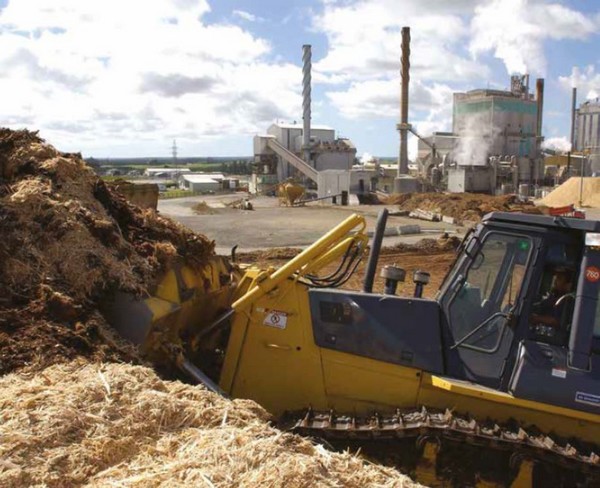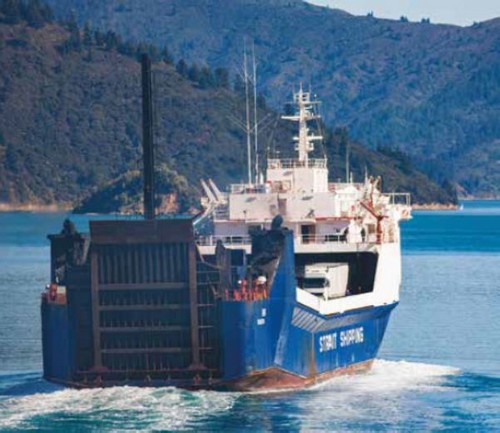Biomass for industrial heat
Using biomass to replace fossil fuels in industrial heating would be a major step towards reducing New Zealand’s greenhouse gas (GHG) emissions. Scion is helping to guide the switch from coal and gas to biomass powered heat especially from forestry feedstocks.
Coal and gas fuelled industrial heating (for example, heating for milk processing in dairy factories) makes up a large proportion of New Zealand’s energy use, and it has been identified in the New Zealand Energy Efficiency & Conservation Strategy 2017-22 as one of the largest areas where we could reduce our energy-related CO2 emissions (along with transport). The potential for GHG reductions at a national level from substituting wood for coal is estimated to be around 900,000 to 1,000,000 tonnes of CO2e per annum.
Coal and gas fuelled industrial heating has been identified as one of the largest areas where New Zealand could reduce energy-related CO2 emissions (along with transport). The potential for greenhouse gas reductions at a national level from substituting wood for coal is estimated to be around 900,000 to 1,000,000 tonnes of CO2e per annum.
Scion is taking a three-fold approach: modelling the potential supply of biomass particularly woody biomass from plantation forests, for example, availability and price at a given location; looking for biomass derived fuels that can be used in existing coal-fired boilers; and our team is leading a programme and case study with GNS Science and the University of Waikato.
The case study looked at biomass replacing coal at a specific industrial site. It compared the cost of biomass to that of coal or gas. Our results showed that biomass could be competitive over the 20-year lifetime of a boiler while also emitting fewer greenhouse gases.
In the last year, Scion hosted EECA’s Large Energy User’s Forum with the top 200 or so industrial energy consumers in New Zealand in attendance. The forum is part of EECA’s business sector which partners with businesses from across New Zealand that spend $1 million or more annually on energy and have high carbon emissions. We were able to demonstrate what Scion is working on in the bioenergy sector and showcase our pyrolysis plant. The forum was attended by businesses and public sector agencies, including government, hospitals and universities.
Our biofuels team has also undertaken commercial contracts for facilities interested in understanding their biomass availability and price, allowing them to decide if biomass is a feasible option for them. For example, Scion provided a South Island consulting company with an assessment that used our databases on wood processing, forest residues and a GIS-based biomass supply model to determine the potential wood supply for a heat plant located in central Christchurch. We found that there were sufficient wood residues available to meet demand.
Collaborators: Energy Efficiency and Conservation Authority (EECA), local and national government, industry stakeholders
Investment: Ministry of Business, Innovation and Employment, Strategic Science Investment Funding, commercial funding

New Zealand Biofuels Roadmap
New Zealand uses almost 8.5 billion litres of transport fuels every year with less than 0.1 per cent coming from a renewable source. Transport fuels are responsible for 17 per cent of our country’s greenhouse gas (GHG) emissions.Large-scale liquid biofuel use will reduce transport sector GHG emissions, give greater security of fuel supply through reduced reliance on imports, as well as economic and employment growth. However, the pathway to establish this new industry is unclear owing to multiple options available at all points long the value chain and the best fit for New Zealand.
Some 18 months ago, Scion started a project to create a biofuels implementation roadmap that will plot out the optimum courses for large-scale production and use of liquid biofuels in the New Zealand market. Over the last year, interviews and workshops were held with stakeholders representing land owners, feedstock processors, distributors, commercial users, researchers and government.
A key element of the work has been modelling different biofuel scenarios that use variable feedstock, conversion technologies and costs inputs across multiple land classes throughout the entire country.
Clean Technologies Science Leader Dr Paul Bennett says, “At the end of the project we intend to have an evidence-based, stakeholder-agreed direction for New Zealand’s biofuels future.”
The project will conclude in late 2017 with the public release of recommendations scheduled for early 2018.
http://bit.ly/2vqHsfT
http://bit.ly/2wTUuHn

